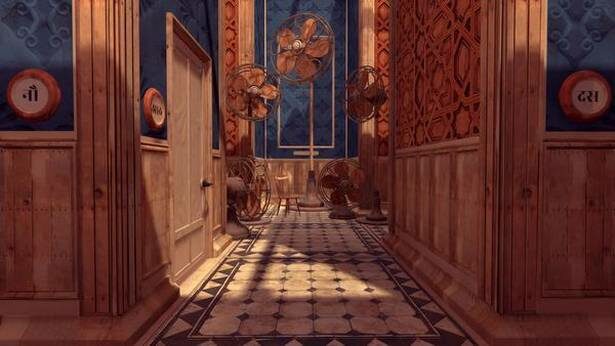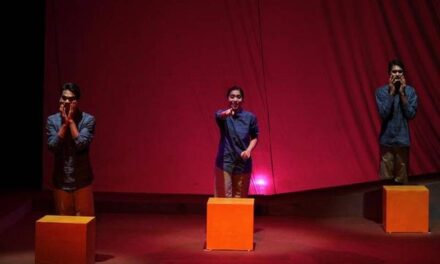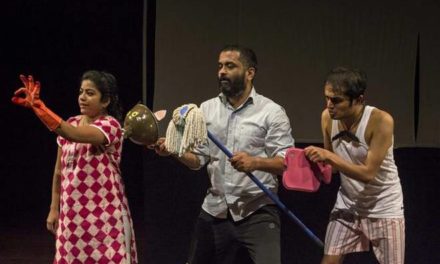In Somewhere, players set out for Kayamgadh, a mythical city of storytellers in colonial India. In order to navigate through this city, a gamer takes on the avatar of a treasure hunter, detective or ghostbuster. The brainchild of game designers Dhruv Jani and Sushant Chakraborty Somewhere is a text-driven, interactive fiction video game.
We tried three games at an event held by India Foundation for The Arts (IFA) at Voxelscapes, Koramangala. In the first game, A Museum of Dubious Splendours you wander through a museum and, following a narrative that offers clues to the nature of a secret object, you open doors to discover if what you’ve guessed is right.
The next game, In the Pause Between the Ringing, sends a chill down the spine. A telephone rings and a ghostly tale — complete with eerie background score by Salil Bhayani, who composes the music for all Oleomingus’ games — ensues as the player goes in search of the sutradhar (narrator). “This game was commissioned by the Victoria and Albert Museum, as part of the exhibition Videogames: Design/Play/Disrupt,” says Dhruv, a graduate in exhibition and spatial design at the National Institute of Design (NID), Ahmedabad.

Photo from the original article.
The company won a grant of around ₹3 lakh from IFA to develop three games. “The games were built under the grant and often with the support from other people. They have also been supported by The Irregular Corporation, an independent UK publisher,” says Dhruv, who along with Sushant, runs Oleomingus, an independent game studio.
Video games may seem far removed from high culture, but game designers Dhruv and Sushant have seamlessly bridged the gap between the two worlds in Somewhere. The duo develops their games on SketchUp, a small Google project created a few years ago, primarily for architects. “It has a relatively clean interface and you can build plug-ins etc. The games have been compiled in 3D and written on Kiln, our own software,” says Dhruv.
A Museum of Dubious Splendours is on Steam, a software that helps you build, manage, buy, and sell games. Somewhere is currently being developed for Windows, Linux, and Mac.
Dhruv says they began working on the games two and a half years ago in Khoj, Mumbai. “Quite a few games are in the making,” says Dhruv. “There is Under The Porcelain Sun, one of our most ambitious games which have been developed from scratch. We are building A Diagram of Leaving for Bangor University, Wales. Then there is Menagerie, which has another version called Bol that was shown at Camden People’s Theatre, London, which merged video games and live performances. Most of our games have been released for free.”
The games are already garnering attention in the world of gamers. “We have a small but dedicated audience, and our work has been written about on various video game magazines and websites,” he adds.
For research, Dhruv referred to history books and other games, “We were inspired by games like Tangiers, The Stanley Parable, and older games like Gotta Go. I also read EM Forster, JJ Carroll, Rudyard Kipling, and Italo Calvino. I was inspired by Girish Karnad’s plays too. I see video games as an extension of theatre.”
This article was originally published in The Hindu on April 15, 2019, and has been republished with permission.
This post was written by the author in their personal capacity.The opinions expressed in this article are the author’s own and do not reflect the view of The Theatre Times, their staff or collaborators.
This post was written by Sravasti Datta - The Hindu.com.
The views expressed here belong to the author and do not necessarily reflect our views and opinions.


















